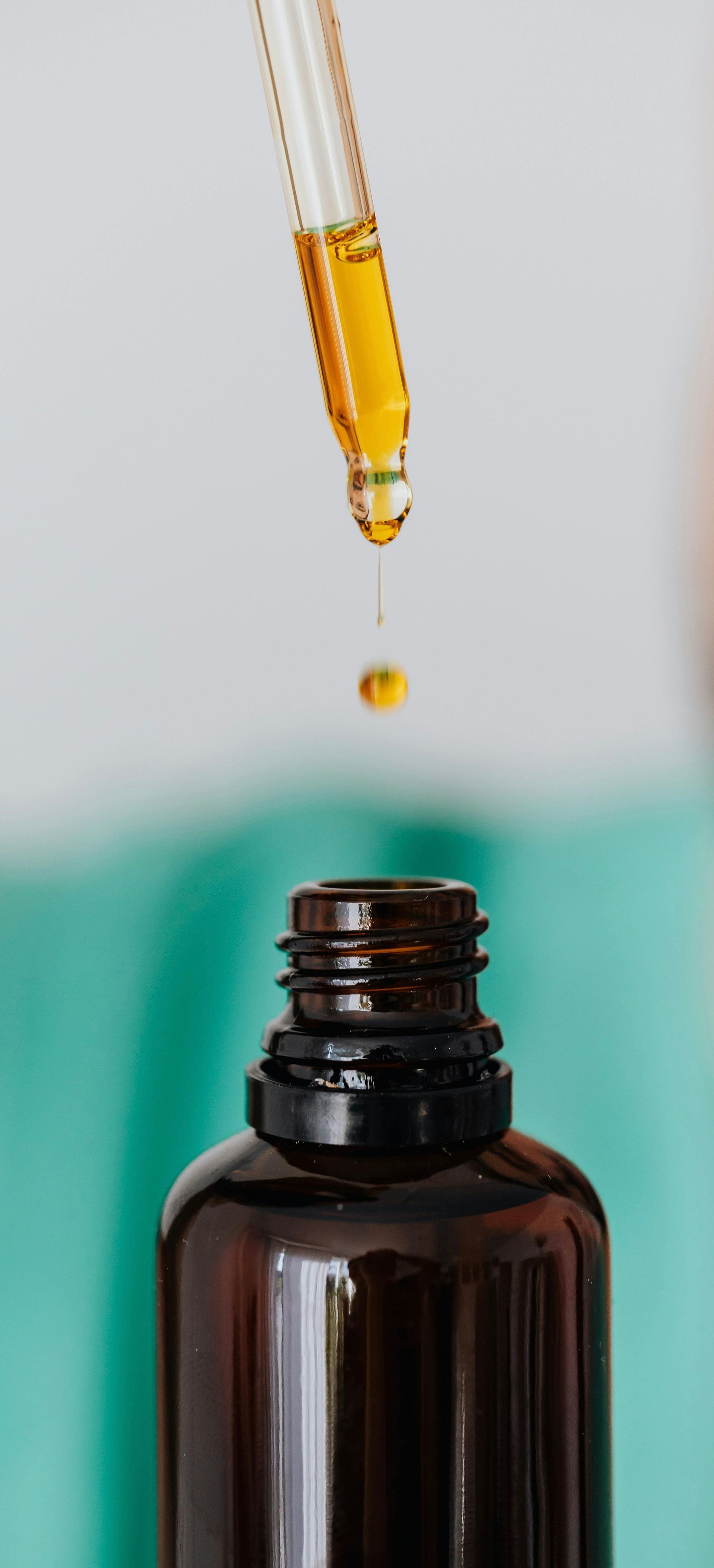Understanding OPKs & BBTs
Tea Time with Jo | Understanding OPKs & BBTs
In the fertility world, OPKs and BBTs are very common acronyms. In this post, we will break down each of these 2 methods and explain why every menstruating body should become familiar with these methods, regardless of whether or not the person is trying to conceive. Let’s jump right in!
OPKs- (Ovulation Predictor Kits)
OPKs are used to track the surges in LH which can help us identify the ovulation window. LH is a hormone the body produces as it is getting ready to release an egg. Test kits typically are available in 2 formats: strips and digital.
Strip tests are just that, strips with an absorbent end and a “results” end. It is suggested to collect urine in a cup, dip the absorbent end in the urine for a specified amount of time, and observe the darkening of the lines on the strip. There is a control line which should always be dark as it signals a properly working test. The second line is the LH line and it will progressively darker as the level of LH increases. When the line is equal to, or darker than, the control line, it is said that the test is “positive” for an LH surge. A line that is lighter than the control line indicates that LH is present, but isn’t at a high enough concentration to indicate the surge before ovulation.
Digital tests work similarly however, they tend to come in a plastic wand, similar to a pregnancy test. The user can collect urine in a cup or hold the test in a stream of urine for a specified amount of time. Rather than seeing the lines, they will have a “results window” that will digitally interpret the results, displaying them as either “high fertility/blinking smiley face” or “peak fertility/solid smiley face”. Other digital tests will ask you to scan the results using the camera on your phone. The photo then gets uploaded into an app which interprets the results for you.
Most women tend to have an LH surge lasting between 24-72 hours prior to ovulation. OPKs can help the user track this surge. If they are trying to conceive, they will want to have intercourse once they see a surge. Conversely, if they are avoiding conception, they will want to abstain from unprotected intercourse during this time.
It is really helpful for the person to notice how their cervical mucus is behaving during the surge. Cervical mucus (CM) can be thick and opaque when LH is still low, but changes to a more clear, thin and stretchy fluid during the surge. This CM is the optimal fluid for conception as it protects the sperm and facilitates their movement towards the egg.
Unfortunately, OPKs are not suitable for everybody. Those who have PCOS can have false positive results as their bodies tend to produce some level of LH due to the presence of multiple follicles/cysts in the ovaries. Peri-menopausal women may also experience multiple LH surges even if there aren’t any follicles to recruit in the ovaries with each surge. This means that they may not ovulate despite having multiple LH surges.
Interestingly, OPKs can also test positive if there is HCG in your system either from a pregnancy or a recent pregnancy loss. Because the structure of LH and HCG is so similar, some OPKS can give you a positive result when it is really being triggered by HCG. For this reason, it is suggested to use a pregnancy test to confirm either way.
All that being said, while OPKs can indicate a surge in LH, they cannot confirm that an egg was actually released (this may also be suspected if you have multiple days of a “positive test”). Since the presence of increased progesterone confirms ovulation, there are some companies that have designed test kits that include both OPKs and Progesterone strips or the option to scan and have the results interpreted digitally.
It is really useful to be able to learn how your CM behaves during different phases of your cycle. Using an OPK to confirm that an LH surge is happening when you notice “fertile cervical mucus” can be a great tool to help you either to conceive or avoid pregnancy. It is also helpful to notice what day of your cycle you are having the LH surge. This will help you understand more about when you could possibly ovulate and help you measure the amount of time in between when you think you might ovulate and when your next period comes. Having that time be at least 12 days is important for proper progesterone production.
Pros and Cons of OPKs:
Pros-easy to use, affordable options, helps narrow down ovulation window.
Cons-doesn’t confirm ovulation, wasteful as the strips/wands are disposable, may be hard to interpret for some, some kits can be expensive, those with PCOS, in Peri-menopause or who may be pregnant/suffered a recent pregnancy loss- may have false positive test results.
BBT-(Basal Body Temperature)
Basal body temperature is the temperature your body measures when are first wake up. Tracking your BBT can be very useful as it paints a picture of how your body is behaving throughout an entire cycle (from day 1 of a period to the next day 1 of the following cycle). Tracking BBT consists of taking your temperature as soon as you wake up but before you rise out of bed. Meaning you reach over to your bedside table, grab the thermometer while still laying down, place the thermometer in your mouth (or other designated site such as underarm), and take your temperature before you get out of bed. This temperature is then recorded in a chart (either manual or digital). For your BBT chart to be accurate, you need to take your temperature roughly at the same time every morning. You can also adjust your temperature on a day that you have slept in or had to get up early, but it won’t be as accurate.
To adjust the temperature, let’s consider this example: If your average wake up time is 7:00am, and your average temperature is 97.5ºF, and you woke up at 6:00am instead of 7:00am, you can adjust 0.1º less for every 30 min difference. Since 6:00am is an hour away from 7:00am, that is 0.2º difference. Since the wake up was earlier, 0.2º gets subtracted from the 97.5º average. This makes the adjusted temperature 97.3ºF on the day of a 6:00am wake up.
If the opposite happens and you sleep in until 9am, you would add 0.1º for every 30 minutes from 7am to 9am. This would make the adjusted temperature 97.9ºF.
You also need to get 3-4 hours of uninterrupted sleep for an accurate measurement. This means that if you got up to use the restroom within 2 hours of your wake up time, your temperature reading in the morning may not be accurate.
If you can manage to take your temperature consistently, seeing the temps plotted on a chart, over the length of an entire cycle, provides a lot of information. Ideally, you would see a chart that has lower temperatures at the beginning of the cycle, a sharp spike in temperature mid cycle, and then a period of 12-14 days of consistently higher temperatures. Normal temperatures range from person to person but the average increase from the beginning of the cycle to the end of the cycle is about 1º-2ºF. Meaning that your baseline temperature (temperature at the beginning of your cycle), may be an average of 97.3º, with ovulation, it may spike to 97.9ºF. Then, it may hover around 98.2º in the luteal phase before it drops back down to baseline with the start of a new cycle.
If you recall from above, the OPK can tell us when our LH is surging but it cannot tell us if we have actually ovulated. The opposite happens with the BBT chart. It cannot predict when we are having an LH surge, but the spike in temperature, followed by several days of elevated temps, indicate that ovulation has occurred.
When ovulation occurs, the rise in progesterone causes our BBT to rise as well, so we can confirm that ovulation has taken place when we see sustained higher temperatures after a spike. This is a great time to, again, observe how CM is behaving. Clear, thin and stretchy CM should be observed before a temperature spike. Afterwards, CM can become more opaque, dry and clumpy.
Because higher temps are attributed to increased progesterone, seeing high temps that last longer than the person’s average luteal phase can be the first indications of pregnancy. Of course this should be verified by an HCG test. If pregnancy has not occurred, progesterone will start to diminish and this will be reflected on the BBT chart as temperatures starting to trend downward until a period starts and the person is back at “baseline”.
If there is no sharp ovulation temperature spike or obvious difference between the temperatures at the beginning of the cycle and the end of the cycle, it is very likely that there is some hormonal imbalance taking place.
Pros and Cons of BBT Charting:
Pros-only requires a thermometer and chart, more complete information since it tracks the whole cycle (provides valuable insight as to your hormonal balance), confirms ovulation, can predict pregnancy, can predict onset of next cycle
Cons-requires consistent daily tracking to be accurate, may be thrown off by illness, certain medications, and not getting 3-4 hours of uninterrupted sleep, may be hard to continue if you travel regularly or work an overnight shift.
It can be really helpful to use both OPKs and BBT for a few cycles to help you see the correlations between your temperature changes and your cervical mucus changes. Once you gain confidence in predicting your own ovulation, you don’t have to use OPKs to predict your LH surge but you can still track your temperature to confirm ovulation.
Final Thoughts:
Understanding your menstrual cycles provides valuable information about your hormonal health that it is worth understanding your own cycle regardless of whether you want to conceive or not.
I am a big fan of tracking your cycles on your own calendar as opposed to an app. Apps use algorithms to predict ovulation so they can often be inaccurate. Furthermore, most tech companies that make apps do not protect your information, but rather they sell it to the highest bidder. I don’t know about you, but I don’t think that trends in my personal menstrual cycle should be anyone’s business; especially since the information may be shared without my consent.
It is important to mention that neither of these methods will be accurate if you are on any type of hormonal birth control. You can still use OPKs and BBT if you use non-hormonal contraception such as a copper IUD.
I hope that this post as helped you to navigate the waters of OPKs and BBTs. They are 2 completely different but complementary methods to help you understand when you ovulate and your cycles, overall. Learning to understand your cervical mucus is equally as important. I hope to do a blog post on that soon. In the meantime, there is a rather lovely post with real life pictures of CM. If you are ok with the visuals, check it out here.
As always, please feel free to share this post if you have found it helpful or bookmark the page so you can refer back to it whenever you need.










